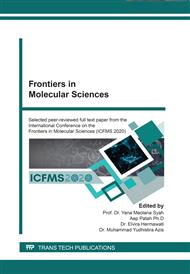p.107
p.115
p.128
p.136
p.143
p.149
p.155
p.165
p.171
Investigation of Ethylene Glycol Heat Transfer Coefficient Trough Double Pipe and Coil Heat Exchanger
Abstract:
The research objective is to assemble a convection test system which acts as a heat exchanger (HE) and test its applicability using ethylene glycol. A Double Pipe (DP)-type HE consists of an inner pipe surrounded by an outer pipe (annulus) whereas a Coil-type HE composed of a coil surrounded by an outer pipe. Water flows through the outer pipe in both types of HE, while ethylene glycol flows through the inner piper or coil. HE in combination with other components (such as) forms a convection test system. The applicability of the system was tested to determine the heat transfer coefficient of ethylene glycol in a DP-type and Coil-type HEs. After that, the heat transfer rate was calculated and compared. The results show that the heat transfer coefficient in the DP-type HE is the lowest at 12.2 W/m2 oC and the highest at 26.8 W/m2 oC; and the corresponding heat transfer rate is the lowest at 8.3 W and the highest is 56.3 W. In comparison, for Coil-type HE, the lowest heat transfer coefficient is 38.9 W/m2 oC and the highest is 66.2 W/m2 oC which correspond to the heat transfer rate 19.9 W at the lowest and 225 W at the highest.
Info:
Periodical:
Pages:
165-170
Citation:
Online since:
January 2021
Authors:
Keywords:
Price:
Сopyright:
© 2021 Trans Tech Publications Ltd. All Rights Reserved
Share:
Citation:


